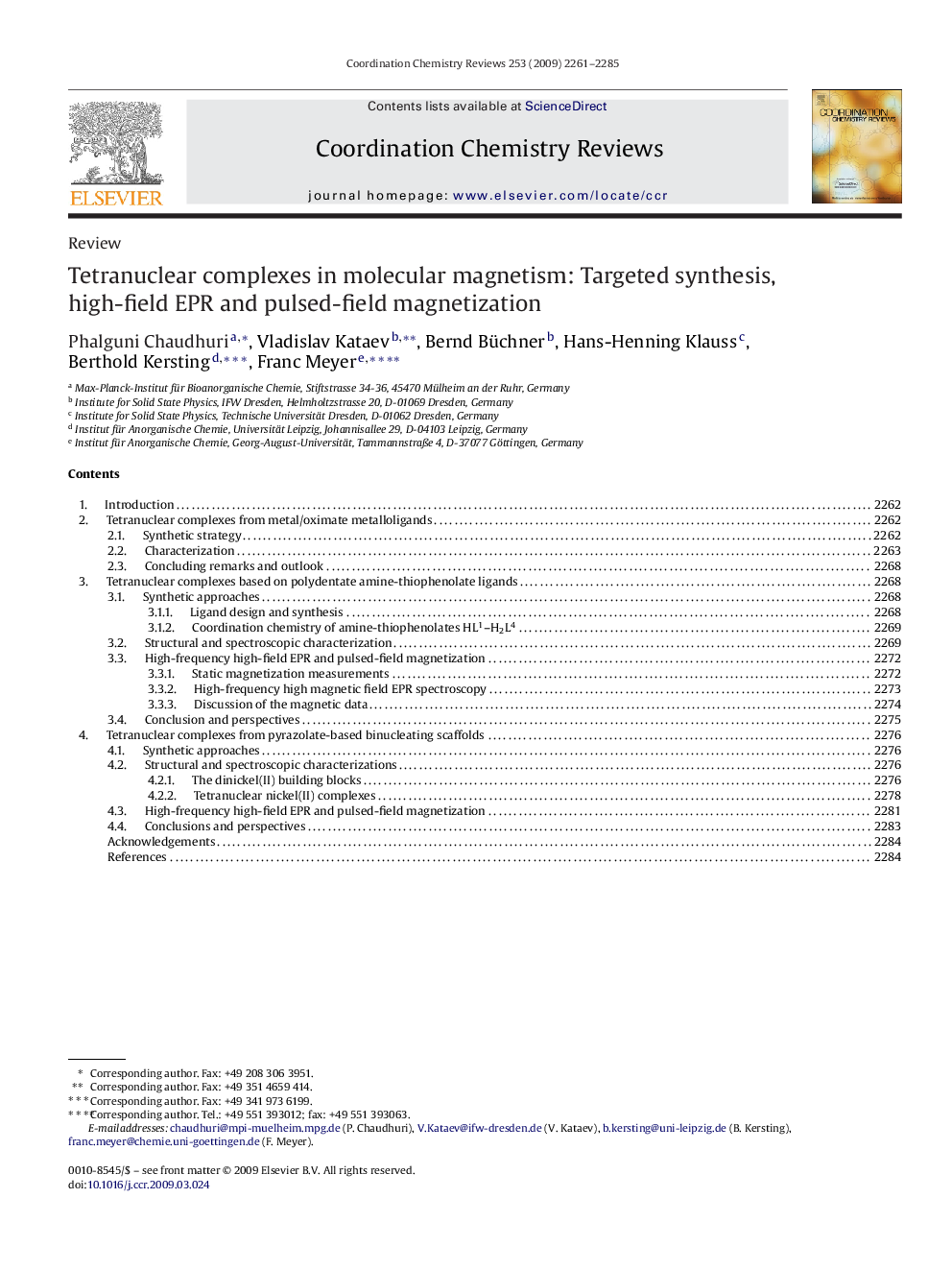| Article ID | Journal | Published Year | Pages | File Type |
|---|---|---|---|---|
| 1300345 | Coordination Chemistry Reviews | 2009 | 25 Pages |
The present article reviews the synthetic approaches, the structures and the spectroscopic and magnetic properties of three different types of tetranuclear complexes: systems with metal/oximate metalloligands, tetranuclear complexes based on polydentate amine-thiophenolate ligands, and nickel/azido complexes with compartmental pyrazolate scaffolds. In all three cases, well-defined bimetallic entities have been used as building blocks for the controlled synthesis of higher-nuclearity systems. This has allowed one to modulate the magnetic properties of the tetrametallic cores and to specifically target low-spin or high-spin ground states. High-frequency high-field EPR and pulsed-field magnetization measurements have been used to experimentally determine spin Hamiltonian parameters and to probe the magnetic responses at high fields.
